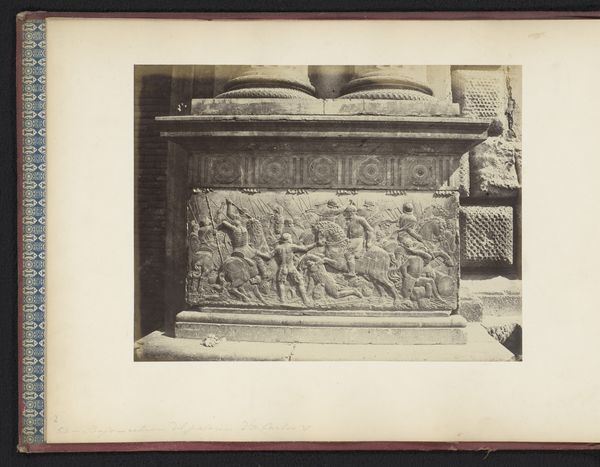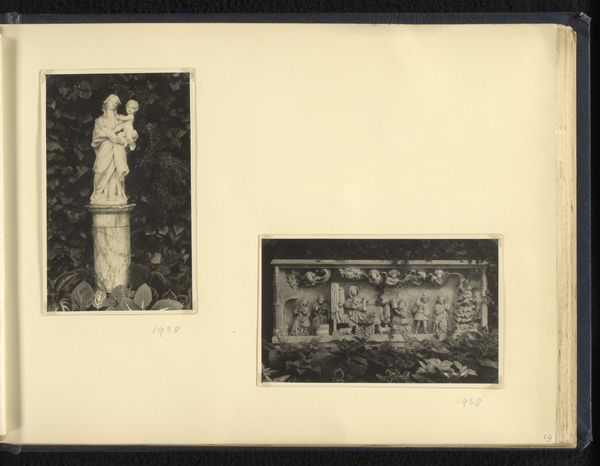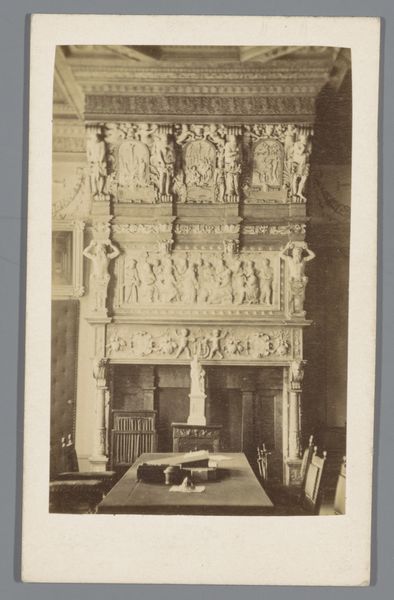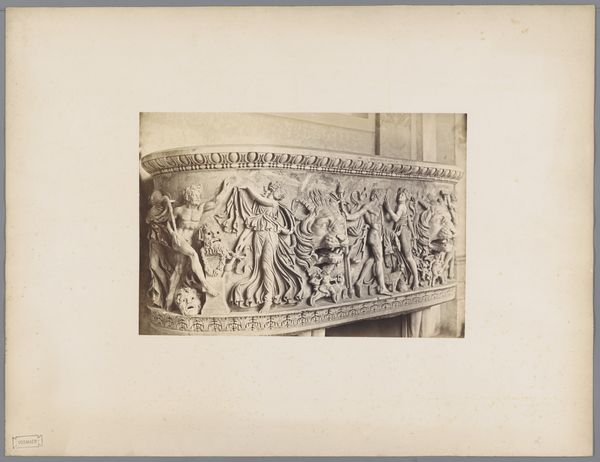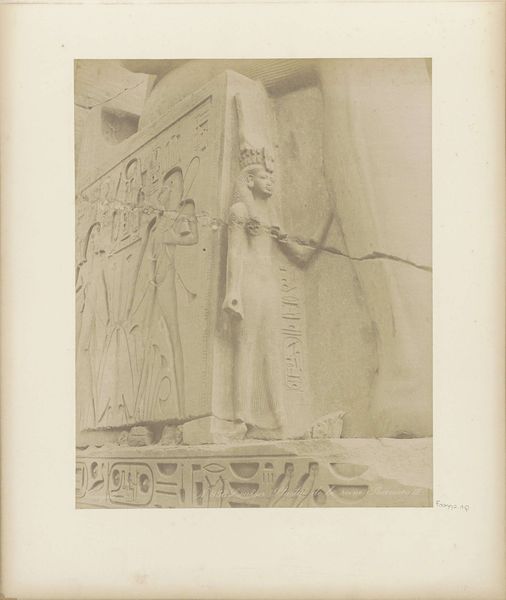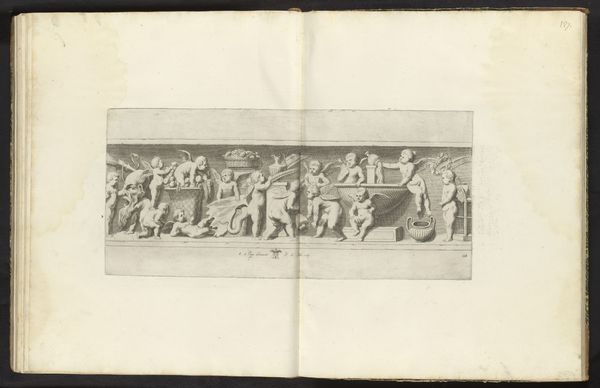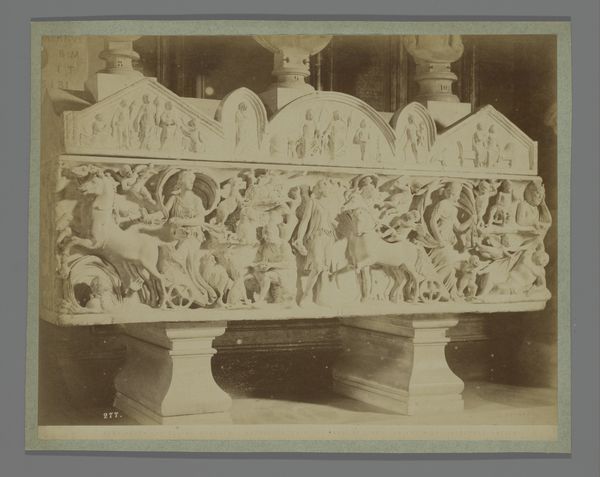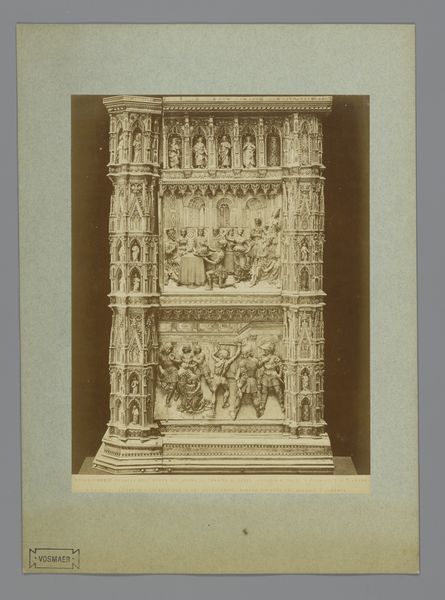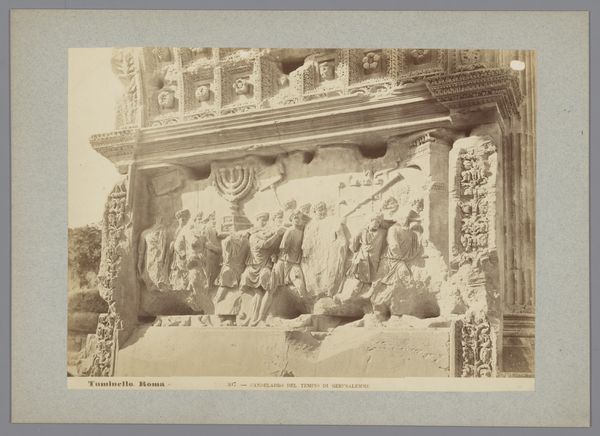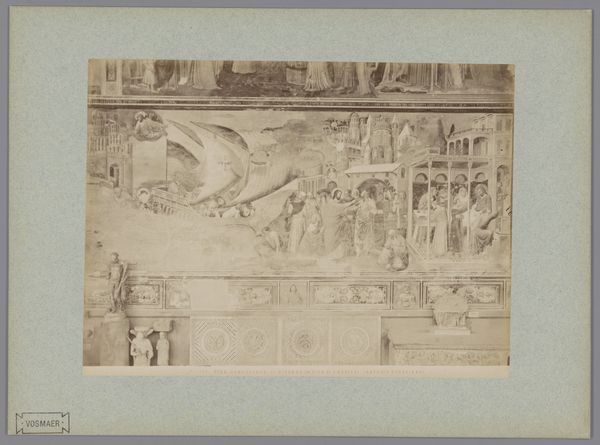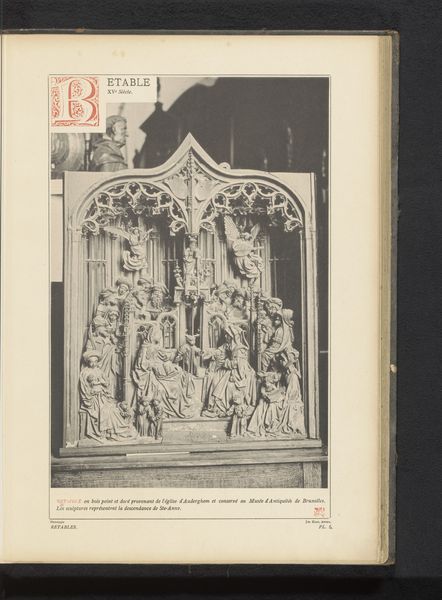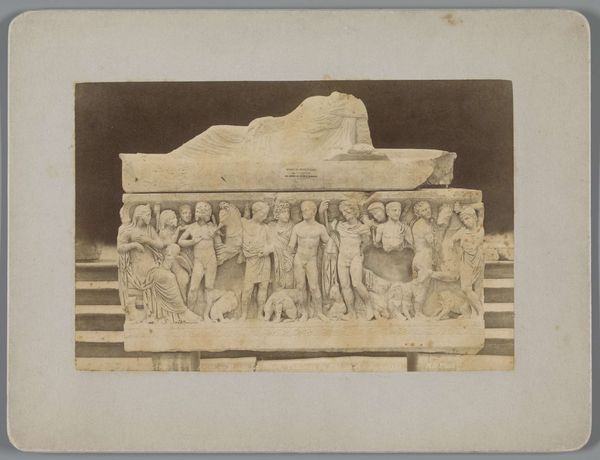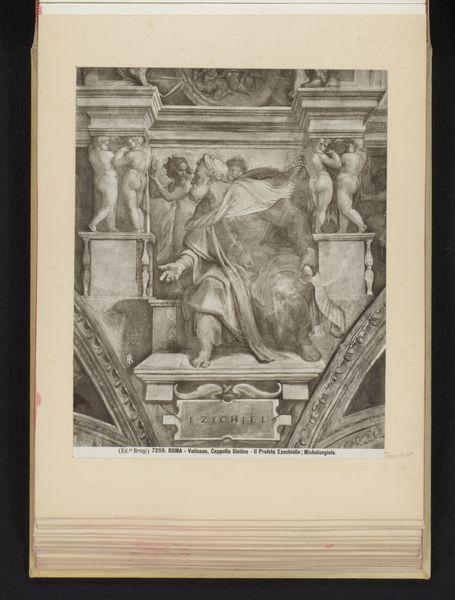
Bas-reliëf op de Boog van Titus te Rome, voorstellende voorwerpen die uit de Tempel van Jeruzalem als krijgsbuit worden meegenomen before 1907
0:00
0:00
print, relief, photography, gelatin-silver-print
#
ink paper printed
# print
#
greek-and-roman-art
#
relief
#
photography
#
ancient-mediterranean
#
gelatin-silver-print
#
cityscape
#
history-painting
Dimensions: height 197 mm, width 250 mm
Copyright: Rijks Museum: Open Domain
Editor: This photograph, taken before 1907 by Edizione Brogi, depicts a bas-relief from the Arch of Titus in Rome, capturing the spoils taken from the Temple of Jerusalem. It's fascinating how a photographic print, an 'ink paper printed', can immortalize a scene of such historical weight and, frankly, somber victory. What historical narratives do you find embedded in this work? Curator: Well, this image allows us to consider the Roman triumph not just as a military event, but as a highly constructed public performance. Think about the power dynamics at play here. The relief itself, and thus this photograph, visually reinforces Roman dominance. The spoils are paraded, quite literally, for public consumption, cementing the Empire's power. Who do you think this imagery was designed to impress, and how? Editor: I suppose it's aimed at both the Roman populace, to solidify their loyalty, and also at subjugated peoples, to broadcast the futility of resistance. The scale and detail are imposing, even in a photograph of the relief. Curator: Exactly. And consider the long life of such images! Photography allowed for widespread dissemination of this triumphant scene, extending its influence far beyond ancient Rome. How does this shift in medium affect its impact and interpretation across centuries? Is it still about Roman power? Editor: It's more complex now, isn't it? Seeing it today, it feels like a historical document, sparking conversations about imperialism, religion, and the ethics of cultural appropriation. No longer a straightforward celebration of conquest, it's a source of critical inquiry. Curator: Precisely! This image prompts us to examine how historical events are framed and remembered – or perhaps, misremembered. The Arch and its photographic reproduction serve as enduring monuments to the power of visual representation and its manipulation. What's been interesting is to observe how our positions and critical analysis can shift when discussing a cultural object reproduced in a variety of media. Editor: Definitely. It really highlights the responsibility we have in interpreting and presenting these images to the public.
Comments
No comments
Be the first to comment and join the conversation on the ultimate creative platform.
